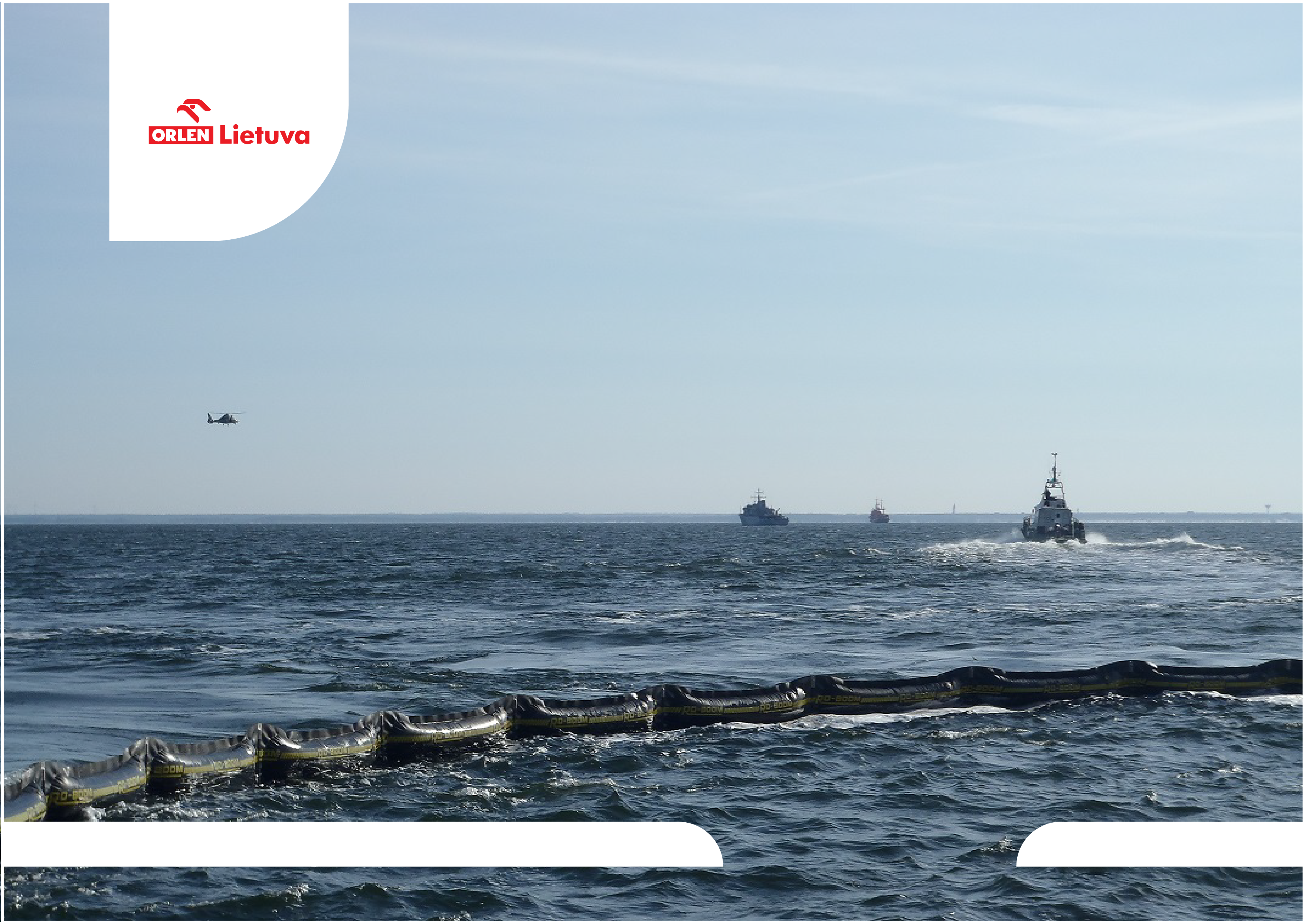A number of advanced technologies, including the leak detection system, are applied at Būtingė Terminal.
Based on the environmental impact assessment studies by international companies and Lithuanian scientists, a strict environmental monitoring program has been introduced and approved serving as the basis for the continuous environmental monitoring of Būtingė Terminal operations:
- monitoring of emissions to air from emission sources;
- monitoring of wastewater discharges from pollution sources;
- monitoring of groundwater exposure;
- monitoring of impact on the quality of the environment (environmental impact).
To define and assess the impact of Būtingė Terminal operations on the marine environment, hydrological, hydrogeochemical, hydrobiological, ichthyological, and coastal monitoring is performed.
In order to ensure appropriate response to potential contingencies, the following is used and conducted at Būtingė Terminal:
- two tugboats with oil spill containment equipment servicing the Terminal. In the event of oil spills, such boats would be able to immediately contain and collect a spill.
- exercises and trainings held in Būtingė Terminal every year with participation of employees and emergency response forces exercising to efficiently and promptly respond to any marine incident. Periodical at-sea exercises are also conducted with participation of the national emergency response forces.
On 27 September 2017, the joint rescue and oil spill response exercises were held in the Baltic Sea with participation of Maritime Rescue Coordination Centre of the Lithuanian Naval Force and Būtingė Oil Terminal to test the technical readiness and interoperability as well as communication of the services involved in the oil spill response operations to promptly respond to the situation, prevent further release, and coordinate the collection and containment activities. Lithuanian Naval Force vessel Šakiai, two tugboats of Būtingė Terminal, Lithuanian Naval Force helicopter, responsible employees of Pipeline and Terminal Operations Subdivision as well as other associated authorities participated in the exercises.

Currently, the Company operates approximately 500 km of crude oil and petroleum product pipelines. Pipeline servicing specialists of the Company are ready to promptly respond to any incidents on the pipelines.
Two methods are used by the Company to protect the pipelines against corrosion with one of them being passive corrosion protection with bituminous or polymer coating, and active corrosion protection, or electrochemical pipeline protection.
The Company performs periodic internal inspections of its pipelines using internal pipeline diagnostic tools. Such inspections are conducted to identify pipeline geometry and wall defects: bends, mechanical damages, internal and external corrosion pits, laminations, and quality of transverse welds.
In summer 2000, the Company launched the software to forecast oil spread in rivers and ditches in case of possible oil spills this way enabling the emergency response services to faster and more efficiently prevent the spread of pollutants and reduce the environmental damage.
In 2017, the new storage tank TK-106 of 52'000 m3 capacity was commissioned. Construction of the new storage tank in Būtingė Terminal increased the storage capacities up to 306'000 m3 of crude oil. The storage tank has a floating roof that allows maximum reduction of air pollution. On 21 December 2017, IPPC Permit was issued authorizing operation of the new storage tank.
ORLEN Lietuva inf.